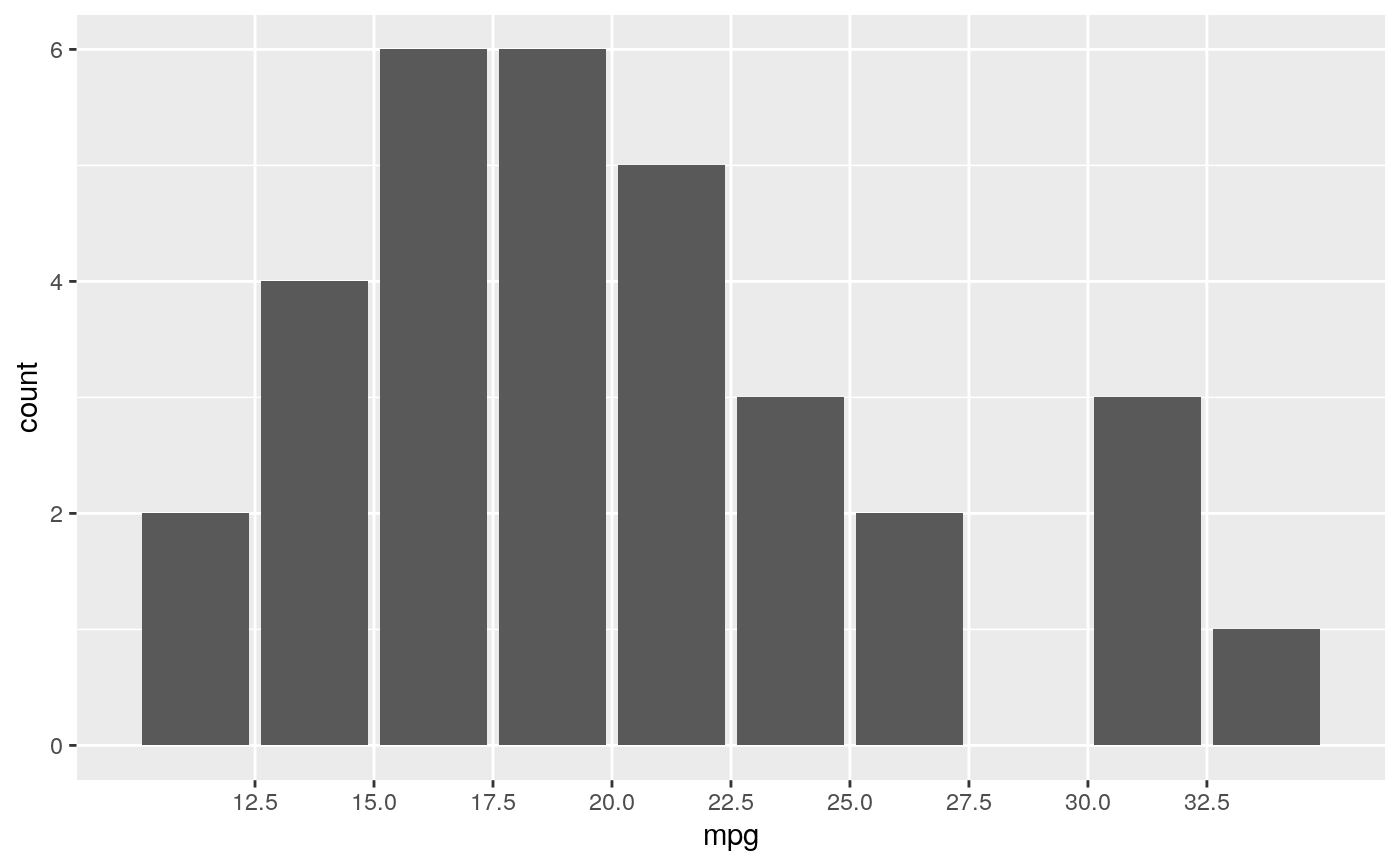scale_x_binned() and scale_y_binned() are scales that discretize
continuous position data. You can use these scales to transform continuous
inputs before using it with a geom that requires discrete positions. An
example is using scale_x_binned() with geom_bar() to create a histogram.
scale_x_binned( name = waiver(), n.breaks = 10, nice.breaks = TRUE, breaks = waiver(), labels = waiver(), limits = NULL, expand = waiver(), oob = squish, na.value = NA_real_, right = TRUE, show.limits = FALSE, trans = "identity", guide = waiver(), position = "bottom" ) scale_y_binned( name = waiver(), n.breaks = 10, nice.breaks = TRUE, breaks = waiver(), labels = waiver(), limits = NULL, expand = waiver(), oob = squish, na.value = NA_real_, right = TRUE, show.limits = FALSE, trans = "identity", guide = waiver(), position = "left" )
Arguments
| name | The name of the scale. Used as the axis or legend title. If
|
|---|---|
| n.breaks | The number of break points to create if breaks are not given directly. |
| nice.breaks | Logical. Should breaks be attempted placed at nice values
instead of exactly evenly spaced between the limits. If |
| breaks | One of:
|
| labels | One of:
|
| limits | One of:
|
| expand | For position scales, a vector of range expansion constants used to add some
padding around the data to ensure that they are placed some distance
away from the axes. Use the convenience function |
| oob | One of:
|
| na.value | Missing values will be replaced with this value. |
| right | Should values on the border between bins be part of the right (upper) bin? |
| show.limits | should the limits of the scale appear as ticks |
| trans | For continuous scales, the name of a transformation object or the object itself. Built-in transformations include "asn", "atanh", "boxcox", "date", "exp", "hms", "identity", "log", "log10", "log1p", "log2", "logit", "modulus", "probability", "probit", "pseudo_log", "reciprocal", "reverse", "sqrt" and "time". A transformation object bundles together a transform, its inverse,
and methods for generating breaks and labels. Transformation objects
are defined in the scales package, and are called |
| guide | A function used to create a guide or its name. See
|
| position | For position scales, The position of the axis.
|
See also
Other position scales:
scale_x_continuous(),
scale_x_date(),
scale_x_discrete()
